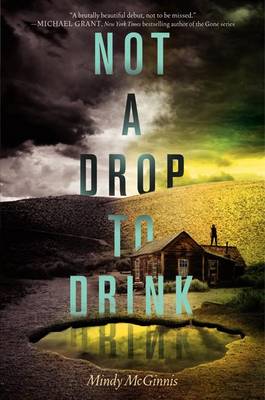Reviewed by e_rodz_leb on
The story starts a few months before Lynn’s mother passes away and it gives the reader a clear idea of what life is like about 16 years after ‘it’ happened. What exactly happened? I’m not sure. It’s really not explained very well, but the gist of it is that water no longer flows through the pipes, there is no electricity, law and government are non-existent, production of essential items has stopped, and it’s an “every man for himself” kind of situation. That is, except if you live in a city, in which case you have to pay for everything and adhere to sever rules. This new life (the only that Lynn has known) is hard and harsh and reminds me of the Wild West of 100 years or more ago. You get the idea, right? The difference though is that the people retained knowledge and that makes this transition easier.
Lynn’s mother is a very hard woman. She opted to stay in her family’s farm house in Ohio, since she had a pond by the house and she was expecting a child. She raised her daughter to be self sufficient, but completely isolated and unprepared to deal with other people, and sorely lacking in the social graces. Thus, Lynn is very straightforward, rude, and even ruthless. She is self-assured and knows what’s right and wrong only in the context of the situation. I think the character of Stebbs, Lynn’s neighbor, acts like a paternal figure for her when she needs it the most. He shows her a quite sort of affection and kindness.
Lucy is a five-year-old girl that Lynn sort of adopts, which is surprising to me because it’s somewhat out of character for her. On the other hand, it serves for Lynn to find purpose; it reminded me to The Life of Pi in that regard. The other important character is Eli, Lucy’s uncle, which is about Lynn’s age and is the love interest. The romance is not a big part of the story and I felt indifferent towards Eli, that is to say that he didn’t blew me away and I think they ended up together because they were both there and there was no one else around (kind of like the way you gravitate to the last cookie in the box, you know what I mean?)
The story progresses slowly, and as stated in the blurb above the writing is evocative and spare. As I was listening to this book, I was not bored at all. You have to understand and feel the sense of complete isolation, where every moment is occupied with chores to do, with protecting the pond and the house, and with making sure that survival is achieved until the next spring. The ending was very unexpected, but realistic and I’m glad that some resemblance of order was the end result. There is certainly enough there for a short story or even another book about this world.
I will definitely read more from McGinnis. Not a Drop to Drink it’s not your typical dystopian, but a simple story of survival in a not too far future. All in all, a great story.
About the cover: The cover was one of the first things that I liked about the book. It portraits the house as I imagined it (without all the out buildings) and Lynn on the roof. It also has the coveted pond front and center. I love the play of the colors, how there is darkness and light that blend together.
Reading updates
- Started reading
- 22 October, 2013: Finished reading
- 22 October, 2013: Reviewed
